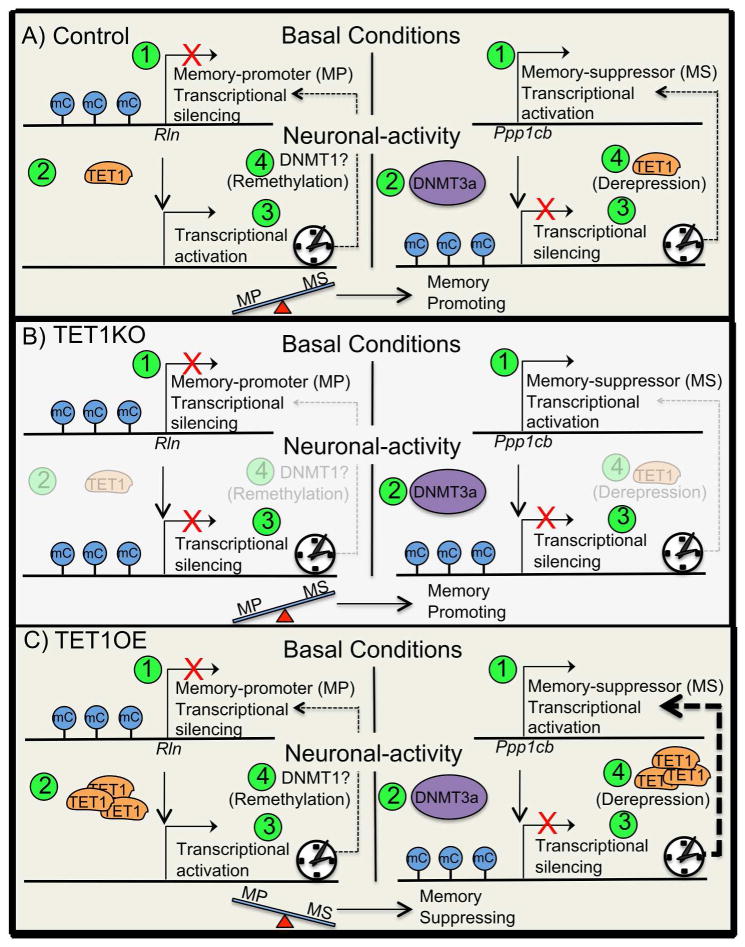Figure 4.
Hypothetical framework of basal versus activity-dependent gene expression for memory-promoters (screen left) and memory-suppressors (screen right). Numbers in green circles depict the order of events. A) Control mouse. 1) During basal conditions the memory-promoter (MP) gene Rln is transcriptionally silenced, whereas the memory-suppressor (MS) gene is transcriptionally activated. 2) After neuronal activation the MP’s gene promoter is demethylated by TET1, whereas the MS’s gene promoter is methylated by DNMT3a. 3) The MP is now transcriptionally activated, whereas the MS is transcriptionally silenced. The net-memory promoter expression-load is not outweighed by that of memory suppressor, therefore memory-promoting cellular processes are induced. 4) After sufficient time after the neuronal activating event has passed the MP promoter is remethylated and silenced, thus returning to the basal gene expression state, whereas the MS promoter is demethylated and gene expression is derepressed, and thus returned to the basal gene expression state of transcriptional activation. B) TET1KO mouse. 1) During basal conditions the memory-promoter (MP) gene Rln is transcriptionally silenced, whereas the memory-suppressor (MS) gene is transcriptionally activated. 2) After neuronal activation MP’s gene promoter remains methylated due to the lack of TET1 owing to TET1 deletion, whereas the MS’s gene promoter is methylated by DNMT3a. 3) The MP remains transcriptionally silenced, whereas the MS is also transcriptionally silenced. The net-memory promoter expression-load is not outweighed by that of memory suppressor, therefore memory-promoting cellular processes are induced. 4) After sufficient time after the neuronal activating event has passed the MP promoter remains hypermethylated and the gene expression of the MP remains silenced, yet the MS promoter also remains hypermethylated and the gene expression of the MP remains silenced, thus setting the stage for future memory promoting conditions. C) TET1OE mouse. 1) During basal conditions the memory-promoter (MP) gene Rln is transcriptionally silenced, whereas the memory-suppressor (MS) gene is transcriptionally activated. 2) After neuronal activation and the promoter region of the MP’s gene promoter is demethylated by an abundance of TET1 owing to TET1 overexpression, whereas the MS’s gene promoter is methylated by DNMT3a. 3) The MP is now transcriptionally activated, whereas the MS is transcriptionally silenced. 4) Due to the abundance of over-expressed TET1 the MS is rapidly demethylated thus reestablishing its transcriptional activativation. Even before the MP’s gene promoter is remethylated the net-memory promoter expression-load is outweighed by that of memory suppressor, therefore memory-suppressing cellular processes are maintained.

